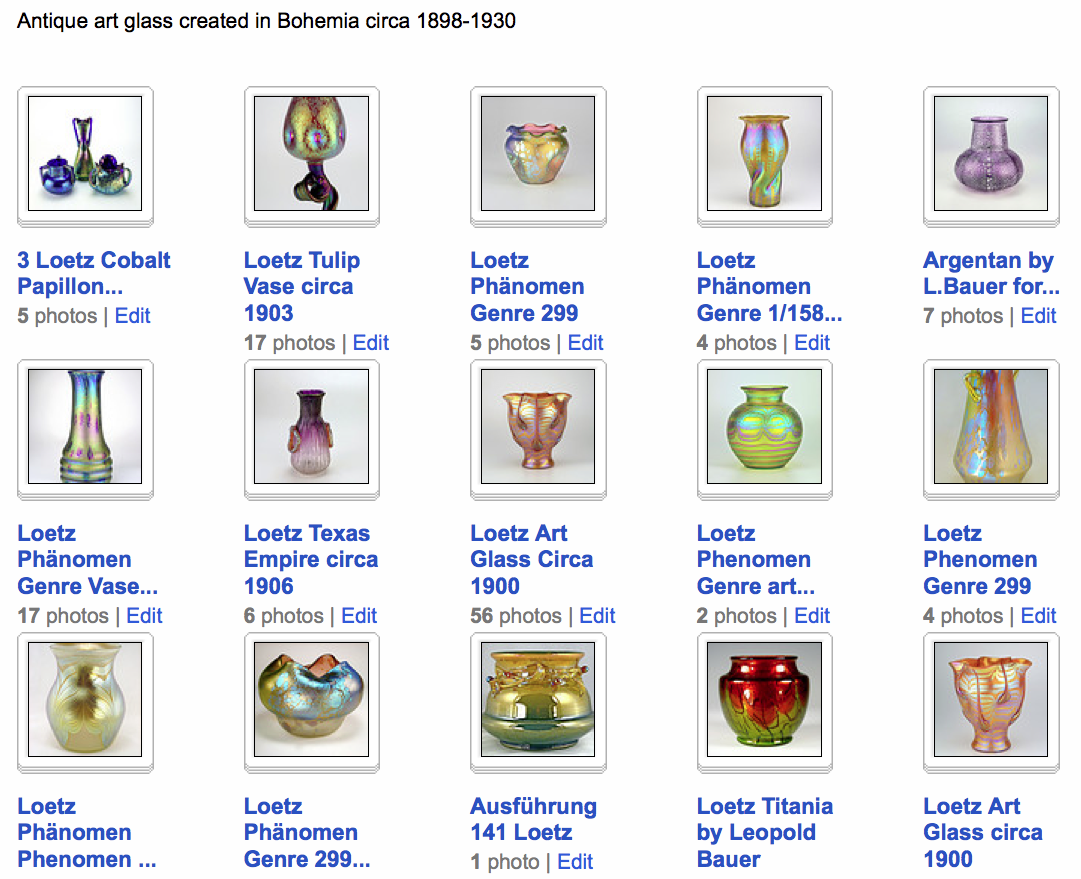 |
| Deco Period Loetz Papillon Post 1918 |
One of the most popular early decors for Loetz was the Papillon line. It had a very long life, having started in 1898 and contined on well into the 1920's. It saw a resurgence as the Art Deco period replaced the Art Nouveau.
This Loetz cobalt Papillon vase stands only 5" tall but displays larger due to its width. The handles always add interest as well as value. It is signed with the etched oval mark seen after 1918 as well as the remnants of a paper label. Nice bright iridescence from what was basically an updated line for the Deco period.
Compare this vase to the early Art Nouveau piece circa 1902 below
The early vase on the right shows a much higher level of technical skill. The handles were extruded/ pulled from the body of the vase. They were then marvered into the body below the rim. The shape follows the basic characteristics of the Art Nouveau period with fluid naturalist lines in a more organic form.
 |
| Fluid organic lines so often associated with the Art Nouveau period, this early Loetz was a testiment to the technical skills of the gaffers employed by J.Loetz |
SO...my question to you is, which do you prefer and why?

